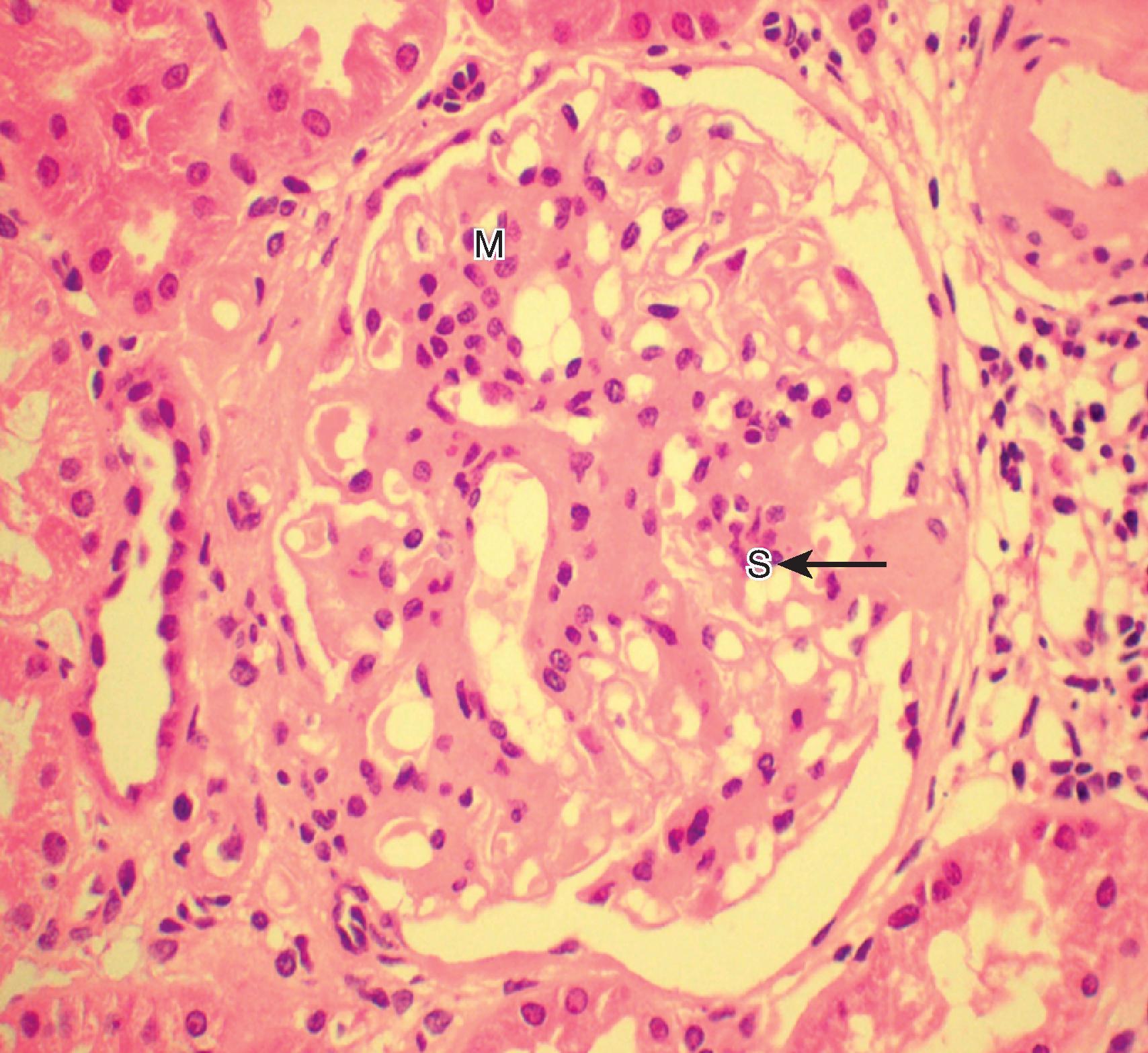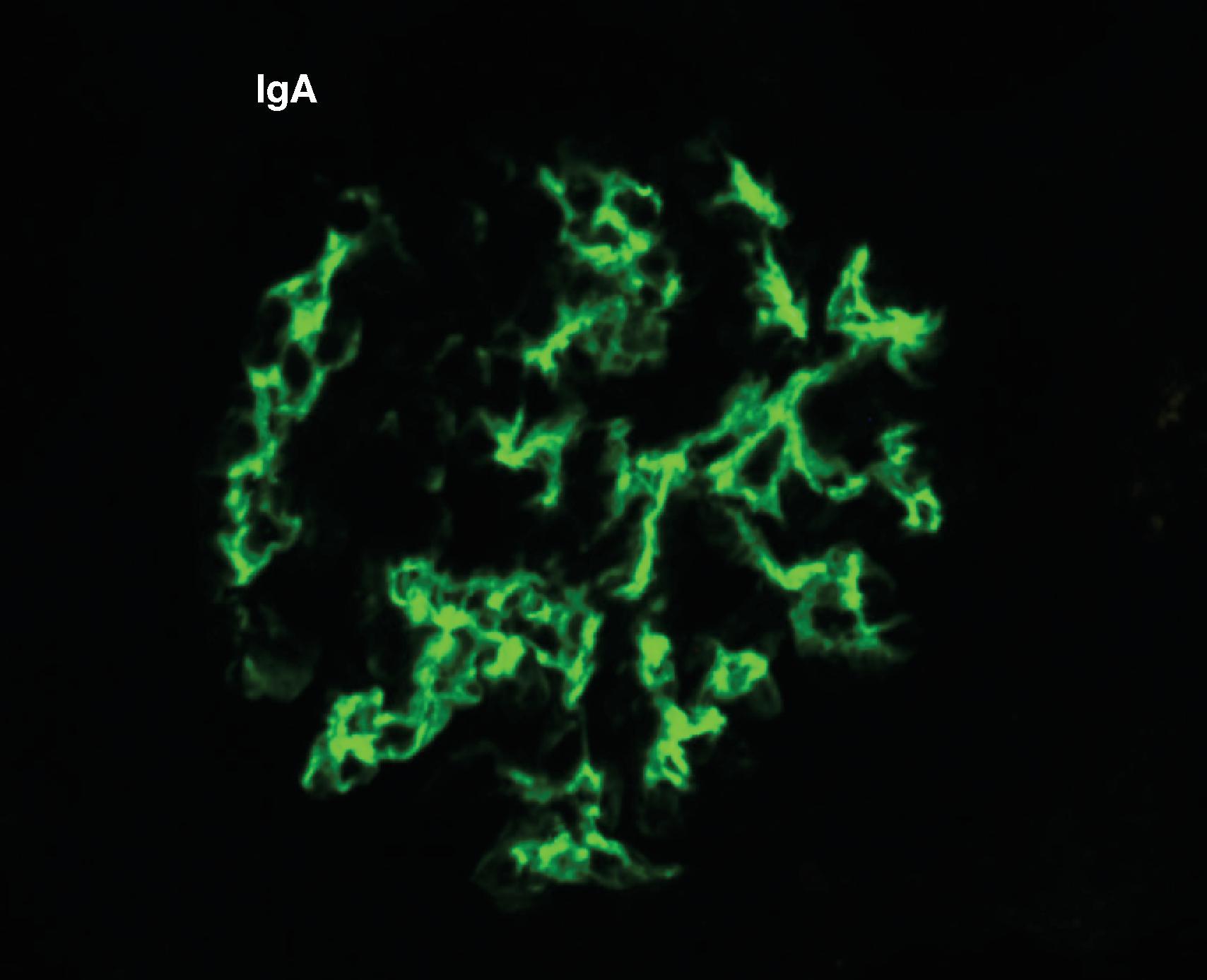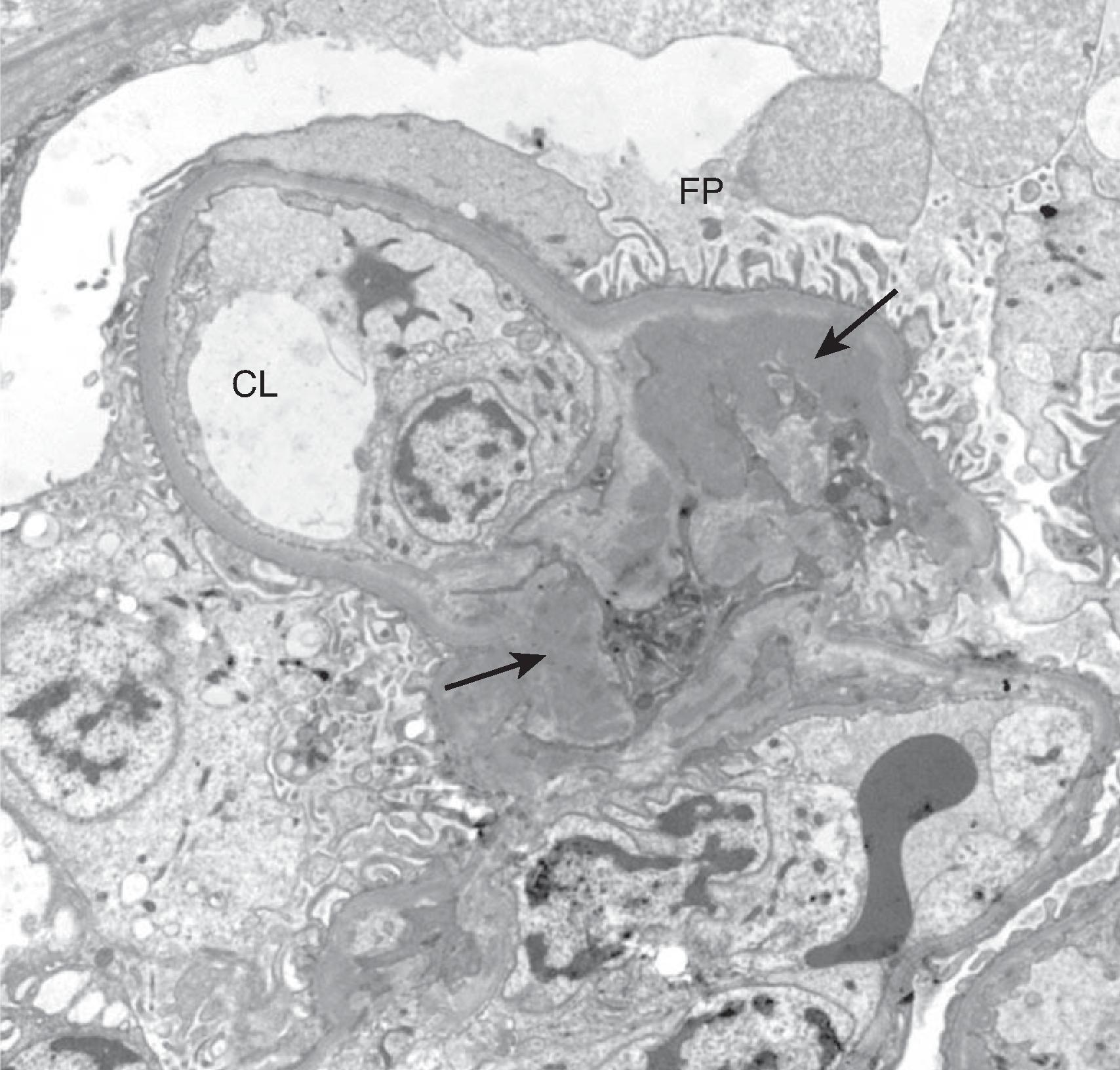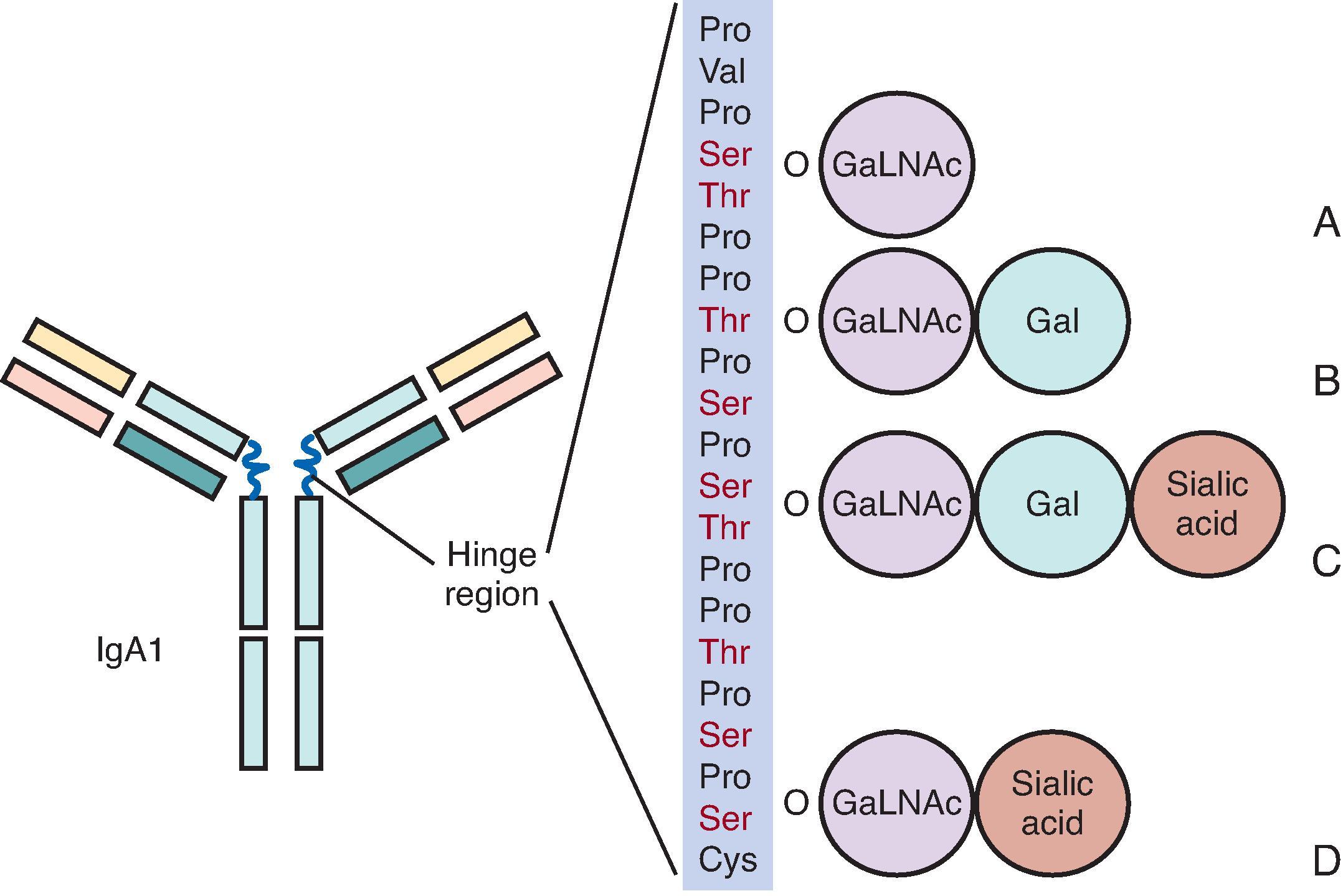Physical Address
304 North Cardinal St.
Dorchester Center, MA 02124
Immunoglobulin A nephropathy (IgAN) was first described in 1968 by the Parisian pathologist Jean Berger, and at one time it was known as Berger’s disease . It is the most common pattern of glomerulonephritis (GN) identified in areas of the world where kidney biopsy is widely performed. IgAN is defined by mesangial IgA deposition often accompanied by a mesangial proliferative GN, and it is an important cause of kidney failure. Recurrent visible hematuria is the hallmark of the disease. Closely related to IgAN is Henoch-Schönlein purpura, now referred to as IgA vasculitis (IgAV), and this less common disease is more frequently found in children. IgAV is a small vessel systemic vasculitis characterized by IgA deposition in affected blood vessels, with kidney biopsy findings indistinguishable from IgAN.
IgAN is most common in Asian populations and is extremely uncommon in people of African descent. The highest worldwide incidence is in Southeast Asia; however, reported incidence is likely influenced by different approaches to evaluation of kidney disease and different thresholds for kidney biopsy. Peak incidence of IgAN is in the second and third decades of life, and there is a 2:1 male to female predominance in North American and Western European populations that is not seen in Asian populations. Subclinical IgAN is estimated to occur in up to 16% of the general Asian population and up to 3% of the Caucasian population. IgAN is occasionally familial, but the vast majority of cases are sporadic.
Episodic visible hematuria most frequently occurs in the second or third decades of life and is the presenting complaint in 40% to 50% of patients. The urine is usually brown rather than red and will often be described by the patient as looking like “tea without milk” or “cola-colored.” The passage of clots is very unusual. There may be bilateral loin pain accompanying these episodes, which may be due to renal capsular swelling. Hematuria usually follows intercurrent mucosal infection, most commonly in the upper respiratory tract, but it is occasionally seen following gastrointestinal infection and may be provoked by heavy physical exercise. Spontaneous episodes occur as well. The time course is characteristic, with hematuria appearing within 24 hours of the onset of the symptoms of infection. This differentiates it from the 2- to 3-week delay between infection and subsequent hematuria characteristic of poststreptococcal GN. Visible hematuria resolves spontaneously over a few days in nearly all cases, but nonvisible (microscopic) hematuria may persist between attacks. Most patients only experience a few episodes of visible hematuria, and such episodes typically recur for a few years at most. These episodes are infrequently associated with acute kidney injury (AKI).
Asymptomatic nonvisible hematuria is usually detected during routine health screening and identifies 30% to 40% of patients with IgAN in most series. Hematuria may occur alone or with proteinuria. It is rare for proteinuria to occur without hematuria in IgAN.
Nephrotic syndrome is uncommon, occurring in fewer than 5% of patients with IgAN, but it is more common in children and adolescents. Nephrotic-range proteinuria is principally seen in patients with advanced glomerulosclerosis. In children and adults presenting with concurrent nephrotic syndrome, nonvisible hematuria, and mesangial IgA deposition, one should always consider the possibility of the coincidence of the two most common glomerular diseases of young adults: minimal change disease and IgAN. A number of case series have reported patients who, on kidney biopsy, have normal light microscopy, foot process effacement on electron microscopy, and electron-dense mesangial IgA deposits and in whom proteinuria resolved completely in response to corticosteroid therapy. Typically, in these cases, following resolution of proteinuria, both nonvisible hematuria and IgA deposits persist.
AKI is uncommon in IgAN (less than 5% of all cases) and develops by two distinct mechanisms. The first is in association with heavy visible glomerular hematuria, which leads to tubular occlusion by red cell casts. This is a reversible phenomenon and recovery of kidney function occurs with supportive measures. The second is a rapidly progressive GN (RPGN) associated with a nephritic presentation and kidney biopsy that shows acute, severe immune and inflammatory injury with fibrinoid necrosis and crescent formation. This may be the initial presentation of the disease or can occur superimposed on known mild IgAN.
Other presentations of IgAN include hypertension, very occasionally malignant hypertension, and chronic kidney disease (CKD).
Mesangial IgA deposition may occur in a number of other diseases, and kidney biopsy findings are often indistinguishable from primary IgAN. Although some associations are well established, other anecdotal observations based on single-case reports should be interpreted with caution. The most common form of secondary IgAN is associated with chronic liver disease, particularly with alcoholic cirrhosis. It is thought to be a consequence of impaired hepatic clearance of IgA. Mesangial IgA is a common autopsy finding in patients with chronic liver disease; however, few patients have clinical manifestations of kidney disease other than nonvisible hematuria. IgAN is also reported in association with HIV infection and AIDS. The polyclonal increase in serum IgA, which is a feature of AIDS, has been cited as a predisposing factor for the disease. The closeness of this association has been controversial, as autopsy studies have indicated a prevalence of IgAN between 0% and 8%. Other secondary causes of IgAN include inflammatory bowel disease and autoimmune disease. Some patients with infection-related GN may also demonstrate IgA dominance on kidney biopsy. Treatment of secondary IgAN should target the primary disease.
Elevated serum IgA levels are found in 30% to 50% of adult patients with IgAN. Serum IgA levels do not correlate with disease activity or severity. Likewise, measurement of poorly O -galactosylated IgA1 O -glycoform levels is neither sensitive nor specific enough to be used as a diagnostic test in IgAN, although there are a number of studies that report an association between high levels of poorly O -galactosylated IgA1 O -glycoforms and a worse prognosis. The diagnosis of IgAN requires a kidney biopsy.
Light microscopic abnormalities may be minimal, but the most frequent finding is mesangial hypercellularity ( Fig. 21.1 ). This is most commonly diffuse and global, but focal segmental hypercellularity is also seen. Focal segmental glomerulosclerosis is also described, and crescents may be superimposed on diffuse mesangial proliferation with or without associated segmental necrosis. Crescents are a common finding in biopsies performed during episodes of visible hematuria with reduced glomerular filtration rate (GFR).

Tubulointerstitial changes do not differ from those seen in other forms of progressive GN, reflecting the final common pathway of parenchymal kidney disease. Mononuclear cell infiltration is associated with tubular atrophy and interstitial fibrosis, ultimately leading to a widening of the cortical interstitium. This finding correlates with a poor prognosis.
The presence of dominant or codominant IgA deposits in the mesangium is the defining feature of IgAN. This is detected in kidney biopsy specimens by immunofluorescence or immunohistochemistry ( Fig. 21.2 ). IgA deposition is diffuse and global. In 15% of cases, IgA is the only deposited immunoglobulin. Other immunoglobulins are also frequently detectable (IgG in 50% to 70%, IgM in 31% to 66%), but their presence does not appear to correlate with clinical outcomes. The complement component C3 is commonly present, but C1q staining is almost universally absent, arguing against a role for the classical pathway in IgAN. However, there is evidence for both lectin and alternative pathway activation in IgAN, and activation of both pathways has been associated with a worse prognosis.

Electron microscopy shows mesangial and paramesangial electron-dense deposits corresponding to IgA immune complexes ( Fig. 21.3 ). The size, shape, quantity, and density of the deposits vary between glomeruli. Glomerular capillary wall deposits may also be seen in the subepithelial or, more commonly, subendothelial space. Capillary loop deposits are associated with disease that is more severe. Glomerular basement membrane abnormalities are seen in 15% to 40% of cases and are associated with heavy proteinuria, more severe glomerular changes, and crescent formation. A group of patients have thinning of the glomerular basement membrane indistinguishable from thin membrane disease. It is unclear whether the clinical course of these patients is different.

The Oxford Classification, published in 2009, is an international scoring system for evaluating pathologic features of IgAN on kidney biopsy. Four variables were identified that correlated most strongly with clinical outcome, independent of known clinical indicators of disease severity at the time of diagnosis, including the presence of hypertension, reduced GFR, and degree of proteinuria. These four variables included the presence of mesangial hypercellularity (M), segmental glomerulosclerosis (S) and tubular atrophy/interstitial fibrosis (T), and endocapillary hypercellularity (E) ( Table 21.1 ). The first three of these (M, S, and T) were independent predictors of rate of GFR decline and the composite of kidney failure or a 50% decline in GFR. A similar association was seen with endocapillary hypercellularity (E) in patients who had not received immunosuppression; this difference was not observed in patients who received immunosuppression, suggesting that endocapillary lesions may be responsive to immunosuppressive treatment. The presence of multiple pathologic features (M, E, S, and/or T) in combination results in additive risk of kidney disease progression. Among the four predictors, studies have consistently demonstrated that the degree of interstitial fibrosis/tubular atrophy is the strongest predictor of kidney survival. The predictive value of these biopsy features was similar in both adults and children. Since its publication, the Oxford Classification of IgAN has been validated in different patient populations from North America, Europe, and Asia, and it is now widely accepted as the histopathologic scoring system of choice for IgAN.
| Histologic Variable | Definition | Score |
| Mesangial hypercellularity | Mesangial hypercellularity score defined by the proportion of glomeruli with mesangial hypercellularity | M0 ≤0.5M1 >0.5 |
| Endocapillary hypercellularity | Hypercellularity because of increased number of cells within glomerular capillary lumina, causing narrowing of the lumina | E0 absentE1 present |
| Segmental glomerulosclerosis | Any amount of the tuft involved in sclerosis but not involving the whole tuft or the presence of an adhesion | S0 absentS1 present |
| Tubular atrophy/interstitial fibrosis | Percentage of cortical area involved by the tubular atrophy or interstitial fibrosis, whichever is greater | T0 0%–25%T1 26%–50%T2 >50% |
| Crescents | Percentage of glomeruli with cellular or fibrocellular crescents | C0: absentC1: 0–25% of glomeruliC2: >25% of glomeruli |
In the original 2009 Oxford Classification, the presence of crescents did not independently predict clinical outcomes in IgAN. However, the Oxford study excluded patients with advanced CKD at presentation as well as those with rapid progression to kidney failure. A working subgroup of the IgAN Classification Working Group subsequently demonstrated that crescents were independent predictors of kidney outcomes in a pooled cohort of 3096 patients, leading to the 2016 addition to the Oxford Classification of a crescent score (MEST-C): C0 (no crescents), C1 (crescents in less than 25% of glomeruli), and C2 (crescents in over 25% of glomeruli). A score of C1 identifies a group of patients with significantly higher risk of poor kidney outcomes if not treated with immunosuppression, although outcomes were similar to C0 if these patients were treated with immunosuppressive therapy. Notably, these observational data are not sufficient to extrapolate to a recommendation that those with C1 lesions should be treated with immunosuppression. A score of C2 identifies patients at risk of a poor kidney outcome even if treated with immunosuppression.
Although considerable progress has been made in characterizing a number of pathogenic pathways operating in IgAN, there remains a great deal that is not understood. In particular, it is uncertain whether IgAN is a single entity or whether mesangial IgA deposition is simply the final common pathway for a number of distinct kidney diseases.
In humans, IgA is the most abundant antibody. It is predominantly present at mucosal surfaces and in secretions such as saliva and tears, where it protects against mucosal pathogens. The IgA molecule exists as two isoforms, IgA1 and IgA2, with each existing as monomers (single molecules) or polymers (most commonly dimeric IgA). It is predominantly polymeric IgA1 that is found in mesangial IgA deposits in IgAN. The major difference between IgA1 and IgA2 is that IgA1 includes a hinge region that carries a variable complement of O -linked carbohydrates ( Fig. 21.4 ). Changes in the composition of these O -linked sugars is the most consistent finding in patients with IgAN across the world, with identical changes seen in patient cohorts from North America, Europe, and Asia.

The key change is an increase in the serum of IgA1 O -glycoforms that contain less galactose. This increase in poorly O -galactosylated IgA1 O -glycoforms is believed to play a central role in the pathogenesis of IgAN. Poorly O -galactosylated IgA1 O -glycoforms form high-molecular-weight circulating immune complexes, either through self-aggregation, aggregation with soluble CD89, or through the generation of IgG and IgA hinge region-specific autoantibodies (“antiglycan” antibodies). These high-molecular-weight immune complexes are prone to mesangial deposition, resulting ultimately in mesangial cell proliferation, release of proinflammatory mediators, and glomerular injury.
Many of the features of mesangial IgA are those typically seen in IgA secreted at mucosal surfaces. Mucosal IgA is polymeric, low affinity, and poorly O -galactosylated and is found at increased concentrations in the serum in IgAN. In addition, a number of studies report elevated levels of IgA antibodies specific for food antigens, mucosal vaccines, and gut-associated bacteria in the serum in IgAN. There are also intriguing data suggesting that gut bacteria may themselves be capable of modulating IgA class switching, the amount of mucosal IgA production, and IgA1 O -galactosylation in the gut-associated lymphoid tissue through activation of lymphoid toll-like receptors. Additionally, pathway analysis based on a large meta-analysis of genome-wide association studies identified the intestinal immune network for IgA production as the most enriched Kyoto Encyclopedia of Genes and Genomes (KEGG) pathway in IgAN. Most of the identified risk alleles are either directly associated with risk of inflammatory bowel disease or maintenance of the intestinal epithelial barrier, as well as response to mucosal pathogens. These genetic observations are also entirely consistent with known secondary causes of IgAN, which include a range of gastrointestinal disorders including inflammatory bowel disease and celiac disease.
Become a Clinical Tree membership for Full access and enjoy Unlimited articles
If you are a member. Log in here